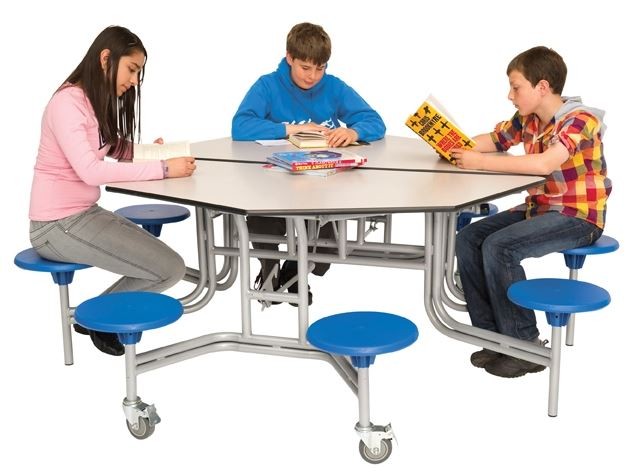
What a Difference a Desk Makes
The traditional desk or classroom table is, for many students, the heart of the learning experience; depending on their level of education, children will spend the vast majority of their school day sat behind the same desk, taking in information and engaging with their fellow classmates. Classroom tables and chairs haven’t always, however, been driven by student comfort and co-operative learning; they’ve often been produced out of necessity, manufactured from the most cost-effective materials to provide a durable (if slightly uncomfortable) learning space. Check out our brief history of classroom desks and tables to see just how far school furniture has come, and see the innovative ideas that might just reflect the future of learning!
Make Do & Mend
The traditional image that comes to mind when you think of classroom desks – the single table, perhaps with storage compartments underneath – actually originates from the mid-eighteenth century. These pieces of classroom furniture, however, were a far cry from the mobile, lightweight pieces we use today; in fact, they were manufactured from solid wood and wrought iron, and hence quickly became fixed units that were very rarely, if ever, moved. These desks threw up a number of problems from a health and safety perspective; largely being furnished from unfinished wood, they were a haven for germs and stains, as well as more than the odd splinter here and there. It also wouldn’t be uncommon for teachers to find any number of rotting pieces of fruit come the end of term!
Standing Order
Throughout history, many popular ranges of classroom desks didn’t actually have seating areas at all; in fact they were designed to be used standing up! This style of desk, which first arrived around the turn of the century as a means of teaching discipline, actually underwent somewhat of a renaissance in the early 2000’s, amongst nationwide panics surrounding childhood obesity and health risks. Now we at Edusentials are always keen to advocate a healthy, happy lifestyle, but we think this might just be a step too far – you could say we wouldn’t ‘stand’ for it! There have, of course, been numerous advances in classroom furniture design that allow for height adjustable desks, ensuring a more comfortable learning experience for the student, and allowing wheelchair users to integrate easily with conventional classes.
Co-operative Learning
Though many reading this will fondly remember sitting through their lessons amicably with a small group of other pupils, jovially discussing notes or working together to solve a problem, this style of seating plan (and method of learning) didn’t actually take on until late in the twentieth century. Schools are now a much more interactive learning space, and their classroom furniture has come to reflect this. Most modern learning establishments now feature either folding or stacking classroom tables and chairs which can be grouped, shifted and re-organised for a more dynamic learning environment. Additionally, with a wide range of laminated and veneered finishes available on the market, teachers no longer have to worry about stains, germs or splinters, creating a safer, happier classroom environment.
The Future of Classroom Furniture
So what does the future hold for the conventional classroom table and chairs? With the integration of smart devices, and ever more new inventions like “nodes” and “pods” being patented each year, it’s difficult to say, but we’re personally great believers in the ethos of: “if it ain’t broke, don’t fix it”. We’ve got a wide variety of safe, functional sets of classroom tables and chairs available at our website, all of which actively help to build a comfortable, education-focussed environment for both you and your students.
Originally written 2 February 2016